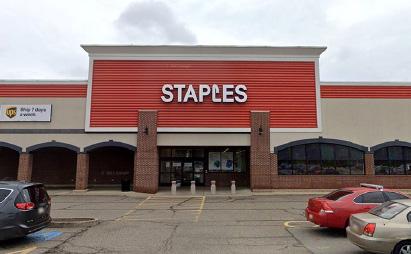
3 minute read
Invest
ELDI directly contributes to the future of East Liberty by investing in development deals that align with East Liberty's community plans. By investing in these projects, we support our partners, encourage good practices like local workforce hiring, gain a voice in project planning, and provide a long-term return to our organization. The capital we invest is provided by foundations, government programs, and other sources.
As ELDI worked to redevelop East Liberty’s commercial core, we stumbled upon a unique investment model that has enabled much of the transformation of the neighborhood’s business district: partnerships with private developers. By leveraging and targeting funds from different sources, we were able to act as an investor in private development projects, and as a result, strategically guided development that matched the community's vision. The story starts with the East End Growth Fund.
The East End Growth Fund
The East End Growth Fund was an effort by the Pittsburgh Local Initiatives Support Corporation (LISC) office to focus planning and pre-development grants to the East Liberty, Friendship, and Garfield corridor over an extended period. LISC is a national nonprofit network that connects hard-to-tap public and private resources with underinvested places and communities.
Recognizing that pre-development funds were particularly hard to come by for community organizations, the Growth Fund provided much needed early, first seed capital to fund planning and marketing studies, such as the Streetworks Market Plan and East Liberty Parking Study, which eventually led to the establishment of East Liberty’s development guidelines and standards. These development guidelines ensured that development partners were working towards the community's shared goals and visions of the neighborhood. There was (and continues to be) a need for early, first seed capital as banks, government, and foundations often want to be the last funds in. It is this early, at-risk capital, however, that is crucial for community organizations to control development in their neighborhood.
A Unique Approach For A Community Organization
It was not immediately apparent that these investments would have such a profound impact on the economic viability of ELDI. These investments were loans that went onto the balance sheet of ELDI, which in turn enabled us to secure pre-development loans for our real estate development activities.
Partnerships With Private Developers
In the early 2000s, after the East End Growth Fund brought everyone together and enabled the necessary pre-development work to occur, ELDI wanted to have a say in the pending Whole Foods Market development (also known as Eastside I) being planned by The Mosites Company. At the time, ELDI wanted to be a codeveloper but did not have the strong balance sheet, available cash, or commercial development experience needed to take on the risk associated with this commercial development. After initial requests to local foundations for investment capital were rejected, ELDI got to the table using federal workforce grants from the Department of Health and Human Services, as well as additional grants from LISC (local foundations did eventually invest as well). These funds enabled ELDI to make patient investments (loans) to the developer in exchange for commitments to incorporate pedestrian access and stormwater management into their design, and to agree to local hiring requirements and a commitment to engage neighborhood workforce organizations in the hiring process.
As Mosites’ Director of Real Estate Mark Minnerly notes, this investment model is uncommon for a community development corporation (CDC): “CDCs often have a difficult time paying for competent staff because most of what they do doesn't generate money, but if you have the possibility of investing in something that's big, then the community gets some of that investment returned,” he said.
“We used the Whole Foods project as a prototype of how the East End Growth Fund would work. You had the foundations stepping in to allow the CDC to have equity to lower the developer’s risk. ELDI’s development team and board understood the value of trying to be creative and not taking a one-size-fits-all approach.”
ELDI has used this financing tool to invest in and help influence the development of six commercial developments in the neighborhood, including Target, Whole Foods, Ace Hotel, Eastside I-V, Eastside Bond, and Shop 'n Save / Staples.
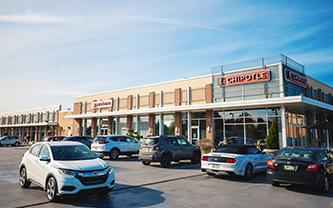
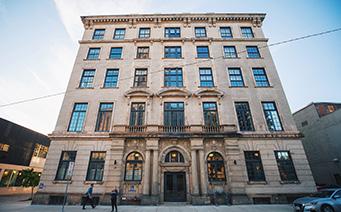
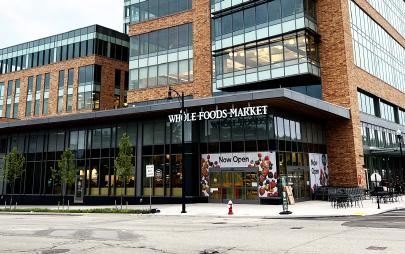
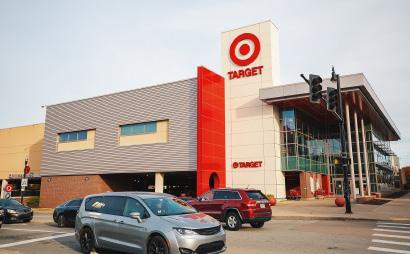
INVESTMENT MODEL IN ACTION: Pedestrian Infrastructure
The failed urban renewal improvements of the 1960s left behind a confusing patchwork of one-way streets, surface parking lots, and a one-way four lane ring road in East Liberty. Throughout every iteration of the Mosites Eastside developments, we used our influence as a coinvestor to advocate for pedestrian access and traffic improvements, such as a pedestrian bridge that connects Eastside II to Shadyside and converting Penn Circle back into two-way streets. This has resulted in significant improvements to pedestrian accessibility and created more entry points to the neighborhood that have diffused traffic significantly.
INVESTMENT MODEL IN ACTION: Eastside
was built on surface parking lots, a turn-around for buses, and a vacant indoor tennis facility. No housing was demolished, and no residents were relocated. The $100 million development, funded in part by the East Liberty TRID, incorporates 50,000 square feet of retail, 350 residential apartments, and a 570-space parking garage—all woven into a completely rebuilt East Liberty Transit Station. Through our co-investor model, we were able to push for the inclusion of a landscaped pedestrian bridge, a reconnected street grid, and extensive landscaping and storm water mitigation improvements.
Bond
Eastside Bond is the final Eastside development from Mosites. When first laying eyes on this building, one might think it's a prime example of gentrification and displacement; however, the entire development
This investment model unified the often combative interests of private development and community planning in a unique way that not only followed the community’s vision but also brought much needed market development to the eastern gateway of East Liberty.










